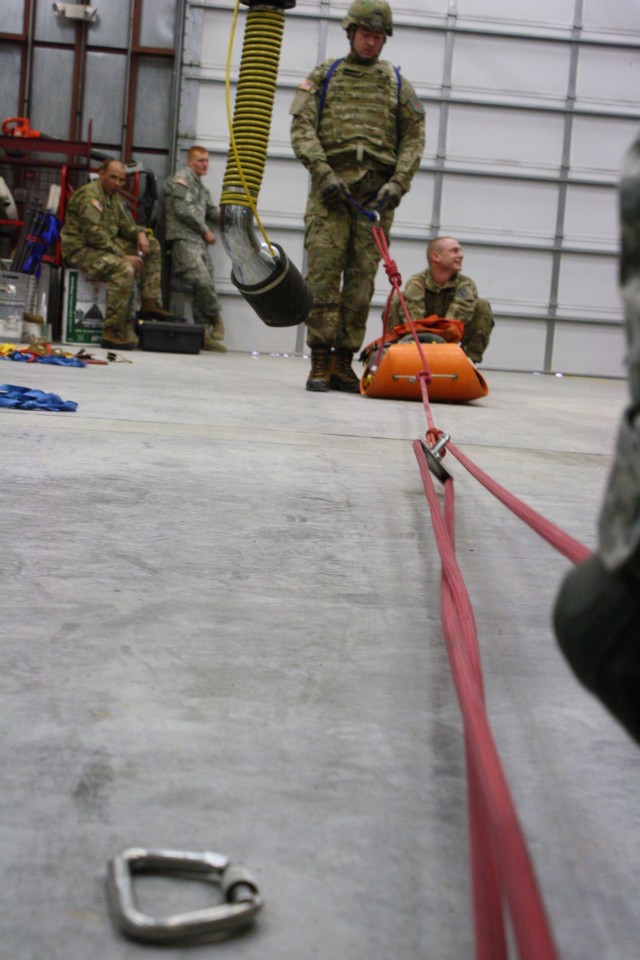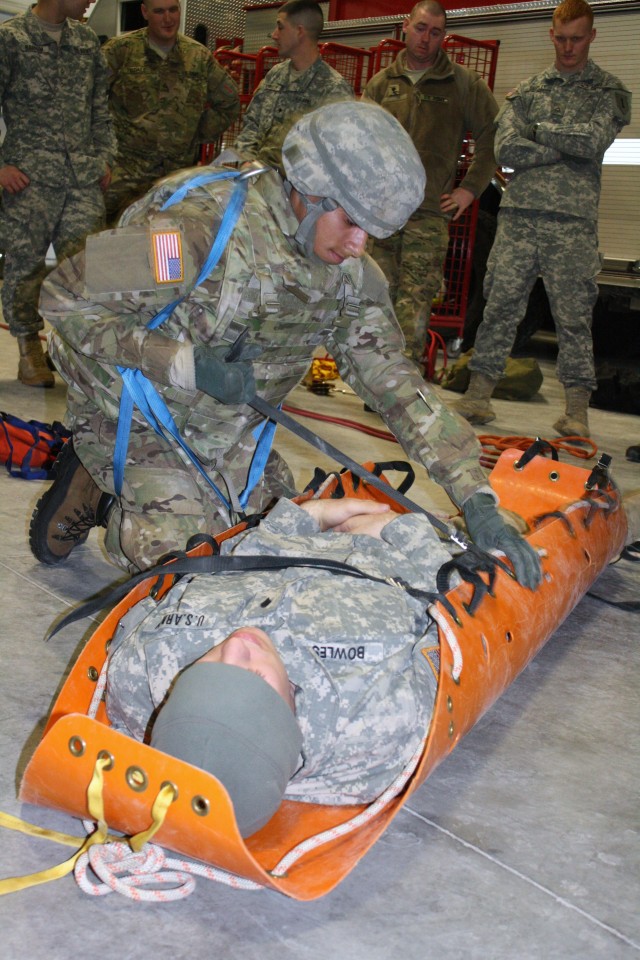FORT RILEY, Kan. - Soldiers preparing for a yearlong deployment to Afghanistan received rope rescue training from the Fort Riley Fire Department Feb. 7 to 10 at Station 4 near Camp Funston.
The Soldiers were with the 4th Squadron, 4th Cavalry Regiment, 1st Heavy Brigade Combat Team, 1st Infantry Division.
Because some of the terrain in Afghanistan is very mountainous, if someone were to fall off a cliff, the Soldiers have the training to use to rope down to get them, said Pfc. Casey Barnum, medic, 4th Sqdn., 4th Cav. Regt.
About 15 of the more than 80 Soldiers deploying received training on various mechanical advantages and ways to tie knots.
Bryan Frayser, assistant chief of training, FRFD, taught the Soldiers the basics of 2:1 mechanical advantage and 3:1 mechanical advantage pulley systems. Frayser also taught the Soldiers the figure eight Family of knots, including figure eight on a bight, figure eight stopper, figure eight follow through, square knot, butterfly and water knot, as well as how to use a Skedco, a rescue system that is compact, light weight and versatile.
Knot tying was beneficial, Barnum said.
"I'll be able to get to a casualty safely while not just relying on myself, while relying on equipment to do most of the work instead," he said, explaining he'll have help when it comes to climbing down a cliff.
"Somebody else can help pull me up instead of me just pulling the casualty out of a hole," Barnum said.
Spc. Daniel Bowles, health care specialist, 4th Sqdn., 4th Cav. Regt., said he found the training on how to use a Skedco to hoist a casualty beneficial because it was something he hadn't done in training before.
The knowledge of mechanical systems will reduce time and workloads during a rescue situation, Frayser said.
"It's going to simplify what they are doing," he said. "It'll make their retrieval a lot easier, instead of playing tug of war with their platoon guys up on top of the hill just pulling on a rope. Now they can have a little mechanical advantage that'll actually cut their workload in half."
Barnum said he appreciated the fire department taking the time to train them.
"I thought it was really nice," he said. "I think it's really cool ... how they are willing to help us all out. None of us really knew anything about knots, and they're patient."




Social Sharing